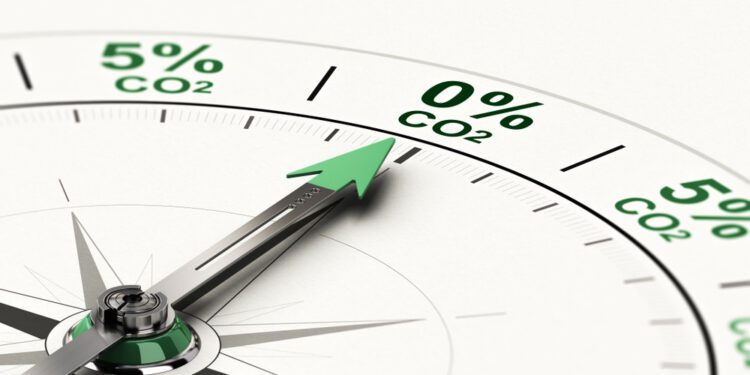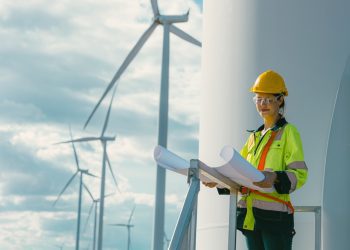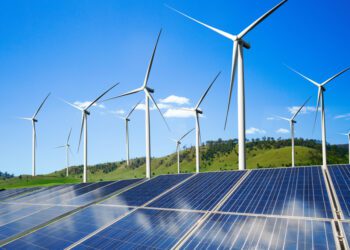Affordability of the global infrastructure transition should be at the top of world leaders’ agenda.
Tackling climate change means radically transforming the vast network of infrastructure which makes the modern world go. Big-ticket items such as power generation, transport, buildings and industry make up more than 60% of global greenhouse gas emissions. But, as the coalition of 197 nations strive to meet the Paris Agreement to decarbonise the global economy by 2050, the speed, scale and cost of the transition required to ‘green’ these assets are posing serious challenges to policymakers, business leaders and transnational organisations.
Limiting the rise in global temperatures to 1.5°C means deploying renewable energy at unprecedented scale—equal to installing the world’s largest solar park each day for photovoltaic power alone, according to the International Energy Agency (IEA). Whole areas of the economy will need to be redesigned. Combustion engine vehicles and fossil fuel power plants need to be phased out. Huge stocks of electric vehicles (EVs) need to be created. Buildings and homes need to be retrofitted for energy efficiency. And the clock is ticking.
The green price tag
We face two challenging truths. We can’t afford not to act. And the cost of this transition is difficult to quantify. The OECD calls for US$6.9 trillion in global investment each year to 2030 to meet climate and development objectives—a little under US$1,000 per year for every person on the planet. By most estimates, this will only go part way to solving the problem. Countries around the world are facing unprecedented financial pressures in the wake of the pandemic, and the overall costs of a transition to a green economy have not been fully dimensionalised.
Many countries are burdened with pre-COVID underinvestment in infrastructure spending, estimated at US$3 trillion a year, in addition to the repayment of increased post-COVID debt. Add to this the costs of retrofitting infrastructure, replacing fossil fuel–related income tax, and providing financial incentives to support investment and R&D of green infrastructure. ‘Just transition’ costs, such as compensation of displaced workers and workforce reskilling, are also a factor as we shift away from a fossil fuel economy.
Decarbonisation pathways
To bring greater clarity to the issue, research undertaken by Oxford Economics on behalf of PwC offers a framework to interpret the global green infrastructure transition through a sample of 80 representative countries and regions (see chart below). Plotted on the ‘decarbonisation challenge’ axis is the level of current and future emissions to abate and the amount of infrastructure to decarbonise; the ‘capacity to pay’ axis reflects each country’s or region’s financial ability to decarbonise both existing and future infrastructure.
The bottom-right quadrant shows middle- to low-income countries, where the OECD estimates that 60% of new infrastructure investment is needed most. These countries have little or no ability to pay for the green transition, despite having lower carbon emissions to abate than developed countries. Trade-offs in these developing economies, predominantly in Africa and Asia, are often more acute than in wealthier nations: these countries have less mature infrastructure, but house more than 3.2 billion (or 40%) of the world’s population. Many who live in these regions are part of an estimated 1 billion people worldwide without access to electricity and 1.6 billion without access to safe drinking water. Leaders in these regions must balance their need to invest in affordable carbon-intensive industries to grow their GDP with the higher lifetime costs of the green agenda. India, for example, derives a high proportion of its energy from fossil fuels, and the main drivers of its carbon emissions—growth in population and GDP per capita—are forecast to grow faster here than in other high-emitting countries, such as China and the US.
Support in terms of foreign direct investment (FDI) and foreign grants is vital to ensure these developing economies have the financing and technologies to support them on their journey to meet net zero targets, such as plans to launch an International Monetary Fund (IMF) climate resilience fund, which could be worth upwards of US$50 billion. However, greater international cooperation among countries is clearly needed. The existing funding pledges are not being met, and there are early signs that future aid packages will also fall short, with only Germany, Denmark, Luxembourg, Norway and Sweden meeting the UN’s recommended contribution target of 0.7% of gross national income in 2020.
The bottom-left quadrant features a group of populous Latin American countries: Mexico, Brazil, Peru and Colombia. These largely upper-middle-income countries have lower CO2 emissions to abate, but those levels are forecast to rise. Currently, hydropower accounts for 45% of the region’s total electricity supply, and most of these countries are forecast to see a decline in carbon-intensive industries as a percentage of their GDP. Brazil has been a world leader in the use of bioethanol in road vehicles, surpassing 50% market share of gasoline-powered vehicles in early 2008. That has had a positive impact on the level of pollution in cities. On affordability, however, a range of factors, including the relatively low average household income and low government revenue per capita, highlight the challenge faced by both consumers and the government in meeting the additional costs associated with transitioning to greener infrastructure.
China is an outlier in this group. Although it currently meets a large share of its energy needs from fossil fuels and has a high share of CO2-intensive sectors in the economy, a number of countering factors lower its score on the decarbonisation challenge index. These include a projected decline in its population by 2050; a growing renewables capacity, including 136 gigawatts (GW) of new renewable capacity in 2020, which is just over half of the global total; and a shifting economic model. The country is expected to pivot from being a maker of carbon-intensive products (e.g., heavy manufacturing, construction) to climbing the value chain to become a producer of high-tech products and a services-based economy. As one of the world’s largest economies, China has significant fiscal firepower. However, the country’s high population, a substantial share of whom still earn low incomes, and lower government revenue per capita could hinder its ability to afford costs over time.
In the top-right quadrant are several high-income economies that have higher but stabilising CO2 emissions to abate, and lower levels of existing infrastructure. These countries and regions are relatively small—together, they have a total population of just over 100 million—and they have a greater capacity to pay for the green transition because of their wider tax base. Notably, this quadrant includes some key fossil fuel–producing countries. Oil-exporting nations have the added challenge of transforming their economies to green amid a gradual decline in demand and export revenues, in addition to finding money for transition costs and fossil fuel tax replacement.
In the top-left quadrant, we find developed economies such as the US, Europe and parts of Asia-Pacific. Their combined GDP, US$47 trillion, represents more than half of the world’s GDP. Their ability to pay for the transition is greater due to having wealthier populations and relatively efficient tax systems. But these countries and regions also have higher, albeit falling, CO2 emissions to abate, and more existing infrastructure to transition to green. Their populations’ relative wealth means these economies are more likely to transfer the transition costs onto consumers. The decision whether to spread the costs across taxpayers or to increase charges to consumers is a sensitive issue, and will become even more so as costs of living increase. COVID-era borrowing also means that many governments will have to make difficult trade-offs that will not always benefit the green transition.
By Richard Abadie Agnieszka Gajewska Will Jackson-Moore
Full report available here












